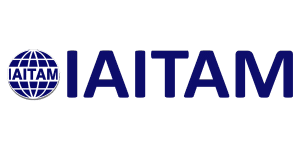Shadow IT: Identifying and Addressing Risks Through Collaborative ITAM

Shadow IT is a phenomenon that many IT asset managers have encountered—whether they realize it or not. It refers to the use of hardware, software, or services by employees without explicit approval from the IT department. While it often begins with good intentions, shadow IT introduces significant risks, from security vulnerabilities to wasted resources.
So, how can IT asset managers not only identify shadow IT but also address it in a way that strengthens organizational IT governance without alienating employees? The answer lies in a collaborative approach, where ITAM partners with other departments to align processes and foster trust. ITAM is not just the IT Police!
What Drives Shadow IT?
Before addressing shadow IT, it’s crucial to understand its root causes. In most cases, shadow IT arises because employees feel that the official IT systems or processes don’t meet their needs. Luckily, we have some ways we can respond.
Here Are Some Common Scenarios:
1. Slow Approval Processes: When it takes too long to get new software approved, employees may seek faster, unofficial alternatives.
2. Perceived Lack of Flexibility: Official tools may not align with the specific needs of a project or team.
3. Ease of Access: With credit cards and cloud-based services, purchasing software or services outside IT’s oversight has never been simpler.
The Risks of Shadow IT
The most obvious issue with shadow IT is the lack of visibility it creates. If IT asset managers don’t know about certain tools or systems in use, they can’t manage them effectively.
This lack of visibility leads to several risks:
1. Data Security Vulnerabilities: Unvetted tools may lack robust security measures, putting sensitive company data at risk.
2. Compliance Violations: Shadow IT often sidesteps licensing agreements, creating legal and financial liabilities. It is never fun to learn about a pocket of shadow IT because they got an audit letter!
3. Redundant Spending: When employees purchase their own solutions, the company may pay for multiple tools that perform the same function.
4. Integration Challenges: Unapproved software or services may not integrate smoothly with official systems, leading to inefficiencies.
Having so many unique pieces of software in our environment can make managing to the exception all but impossible. Which is one of the main goals of our standards in the first place.
Identifying Shadow IT
The first step in managing shadow IT is knowing where to look. IT asset managers can use several strategies to uncover unauthorized tools and services:
1. Monitor Network Traffic: Unusual traffic patterns or new domains accessed frequently may indicate the presence of shadow IT tools.
2. Audit Expense Reports: Reviewing expense claims can reveal subscriptions to software or services that haven’t been approved.
3. Collaborate with IT Teams: Regular conversations with helpdesk or cybersecurity teams can provide valuable insights into tools employees are using.
4. Engage with End Users: Talking directly to employees can uncover shadow IT while building trust and understanding.
However, identifying shadow IT is only part of the challenge. The real work lies in addressing it constructively.
Addressing Shadow IT Through Collaboration
To effectively manage shadow IT, IT asset managers must strike a delicate balance. The goal is to bring unauthorized tools under governance without stifling innovation or creating friction between departments.
Here’s How to Approach It:
Understand the Why
When shadow IT is uncovered, resist the urge to immediately clamp down. Instead, investigate why employees turned to these tools in the first place. Was the official process too slow? Were approved tools insufficient? Understanding the reasons behind shadow IT is critical to finding solutions that work for everyone.
Streamline Approval Processes
One of the best ways to reduce shadow IT is to make the official software request process as easy and fast as possible. Employees will naturally gravitate toward the path of least resistance. By simplifying approvals, providing clear guidelines, and ensuring quick responses, IT asset managers can encourage employees to work within the system rather than outside it.
Promote Approved Tools
Sometimes shadow IT happens simply because employees don’t know what’s available. Regular communication about the tools and services already approved—and how they can be accessed—can reduce the temptation to seek outside options.
Introduce a Governance Framework
Rather than taking a punitive approach, develop a framework that allows for flexibility while maintaining oversight. For example, create a “sandbox” program where employees can test new tools under IT’s supervision. If a tool proves valuable, it can be officially adopted.
Partner with Stakeholders
Collaborating with department heads and team leads can help IT asset managers gain insight into evolving needs and potential gaps in the current IT portfolio. Building these relationships ensures that ITAM is seen as a partner rather than an enforcer.
Building a Proactive Culture
Ultimately, addressing shadow IT isn’t just about managing risk—it’s about building a culture where employees and IT work together to meet business goals.
This starts with communication. Regularly engage with employees to understand their challenges and needs. Educate them about the risks of shadow IT and the benefits of working within the ITAM framework. And don’t forget to celebrate successes—highlighting stories where collaboration led to better tools, improved processes, or significant cost savings.
By creating an environment where employees feel heard and supported, IT asset managers can turn shadow IT from a problem into an opportunity for growth and creativity all while keeping the business more secure.
